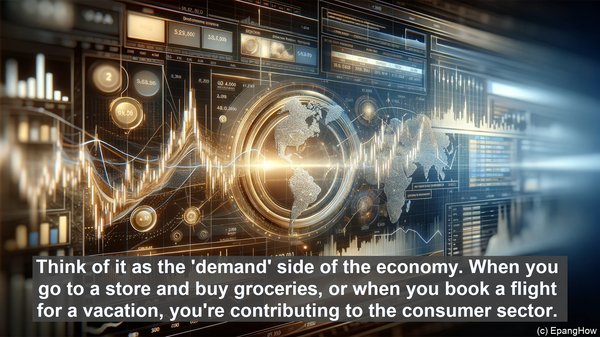Introduction: The Economic Landscape
Hello, everyone! Welcome to our article on the consumer sector and the business sector in economics. As we navigate the vast realm of economics, it’s crucial to comprehend the various components that shape it. Two such components are the consumer sector and the business sector. While both are integral to the economic machinery, they operate in distinct ways, serving different purposes. In this article, we’ll explore these differences, highlighting their significance and impact. So, let’s dive in!
Defining the Consumer Sector
The consumer sector, also known as the household sector, comprises individuals and families who purchase goods and services. These purchases are driven by personal needs, desires, and preferences. Think of it as the ‘demand’ side of the economy. When you go to a store and buy groceries, or when you book a flight for a vacation, you’re contributing to the consumer sector. This sector is fueled by the income individuals earn through various sources, such as salaries, investments, or government assistance. It’s important to note that the consumer sector isn’t limited to individual consumers; it also includes non-profit organizations and government bodies that make purchases for public welfare.

Understanding the Business Sector
In contrast to the consumer sector, the business sector, often referred to as the producer sector, is the ‘supply’ side of the economy. It consists of companies, enterprises, and organizations that produce and sell goods and services. These entities are driven by the goal of generating profits. They employ resources, such as labor, capital, and technology, to create products that cater to consumer demands. The business sector encompasses a wide range of industries, from manufacturing and agriculture to finance and technology. It’s the engine that drives economic growth, creating employment opportunities and fostering innovation.
The Interplay: Consumer Sector and Business Sector
The consumer sector and the business sector are interconnected, forming a dynamic economic ecosystem. Let’s consider a simple example: the purchase of a smartphone. As a consumer, you decide to buy a particular model. Your purchase not only fulfills your personal need but also contributes to the revenue of the company that manufactured the phone. This, in turn, enables the company to invest in research, development, and production, leading to the creation of more advanced models. The cycle continues, with consumer demand driving business activities, and business innovations shaping consumer choices. It’s a symbiotic relationship, with each sector relying on the other for sustenance and growth.
Economic Indicators: Consumer Spending and Business Investment
Consumer spending and business investment are two crucial indicators that reflect the health of an economy. When consumers are confident and have disposable income, they tend to spend more, signaling a robust economy. This increased spending, in turn, stimulates the business sector, leading to higher production, job creation, and economic expansion. On the other hand, business investment, which refers to the allocation of resources by companies for future growth, is a key driver of innovation and productivity. When businesses invest in research, infrastructure, or human capital, it sets the stage for long-term economic progress. Thus, these two sectors, through their actions, influence the overall economic landscape.
Government’s Role: Balancing the Scales
In the economic arena, the government plays a pivotal role, acting as a regulator and facilitator. It formulates policies and regulations that ensure fair competition, consumer protection, and business stability. Additionally, the government also intervenes during times of economic downturn or crisis, employing measures such as fiscal stimulus or monetary policies to revive the economy. It’s a delicate balancing act, with the government striving to create an environment conducive to both consumer welfare and business growth.

